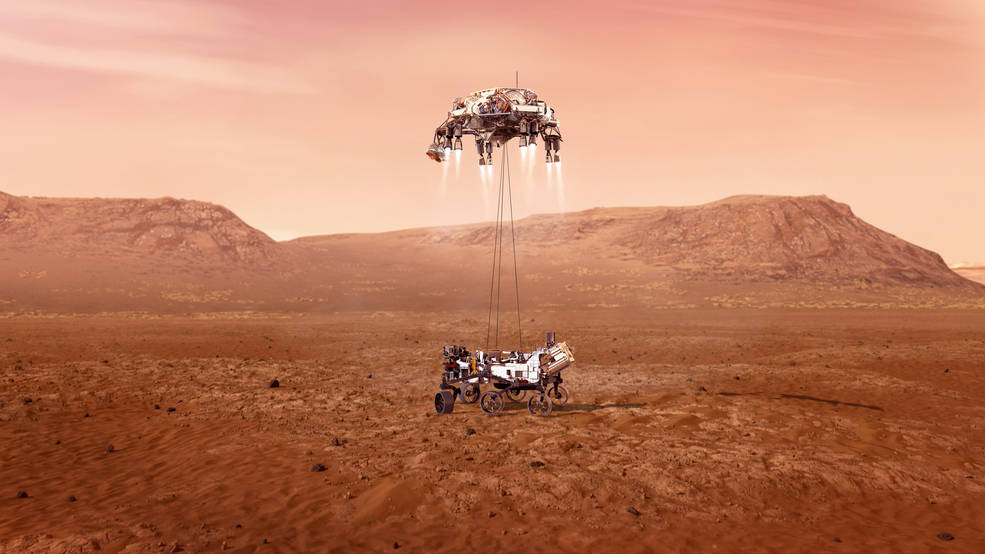
An illustration of NASA’s Perseverance rover landing safely on Mars. Hundreds of critical events must execute perfectly and exactly on time for the rover to land safely on Feb. 18, 2021. Credits: NASA/JPL-Caltech
NASA’s Perseverance Mars Rover landed in the Red Planet’s Jezero Crater on Thursday, February 18, where it will look for signs of ancient microbial life & collect samples for future missions to return to Earth. To help it on its way, the rover uses more than 80 quad operational amplifier chips designed by faculty and students of our Integrated Circuits and Systems Laboratory (ICASL), led by Professor Ben Blalock.
Blalock and his team could not be more excited.
“Working with the NASA & JPL is always a fantastic opportunity,” said Blalock. “It’s UT-ICASL’s privilege to contribute their missions of exploration. I believe humankind is at its best when exploring.”
Watch live #CountdownToMars coverage from NASA’s Jet Propulsion Laboratory, starting at 2:15 p.m. EST: https://go.nasa.gov/3k2VzmV

Professor Ben Blalock
The Mars QOA chip was designed by two UT-ICASL graduate research students, Stephen Terry and Robert Greenwell, with Blalock as their research advisor, in collaboration with NASA’s Jet Propulsion Laboratory, which funded the research.
Blalock’s research team at UT has extensive experience in extreme environment electronics, including environments of wide temperature and radiation variations.
“The opportunity to design the Mars QOA came about because no commercial-of-the-shelf operational amplifier chip could satisfy, or survive, the Martian surface environment,” said Blalock.
The Curiosity rover, using 80+ copies of the Mars QOA, is still exploring Mars following its early August 2012 arrival. That rover’s prime mission duration was a single Martian year, or about 23 Earth months, but the rover’s high reliability has enabled the continuation of its mission to further science.